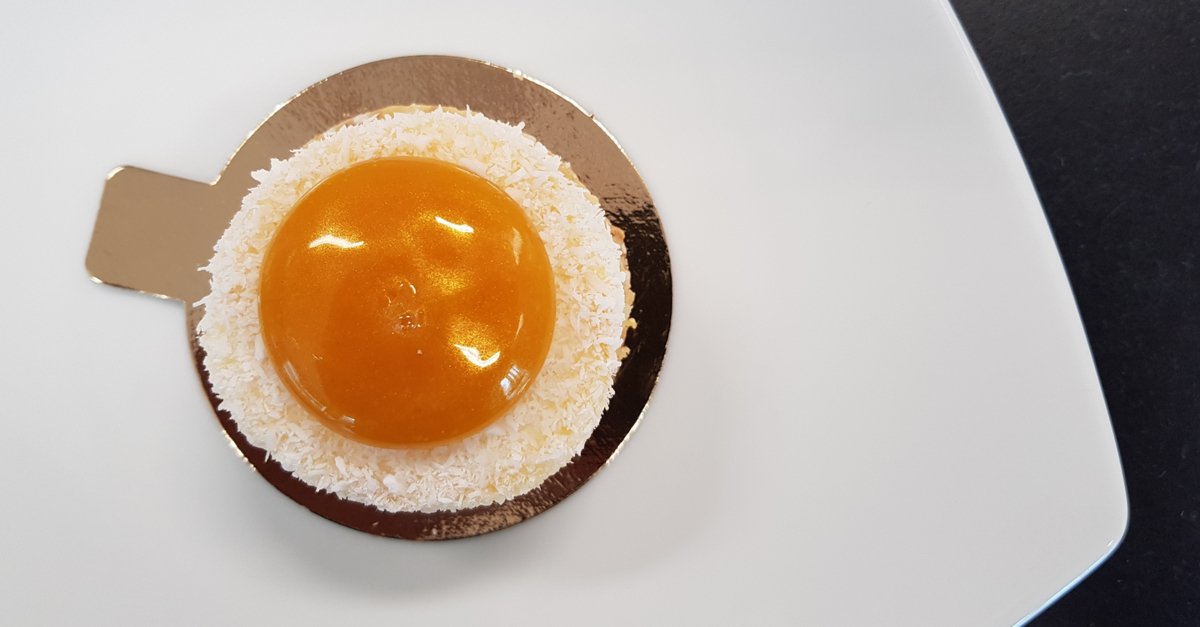The Struggle:
Between direct, reverse and frozen reverse spherification you can spherify just about anything. But there are still a few outliers. Spheres made with liquids that are high in fat and warm/hot spheres still seem to be difficult to pull off and pretty uncommon. Well, we have developed a way to make hot spheres that spherify perfectly each time and can even be made with high fat content.
If you are wondering “what’s spherification?” You can click the link here to learn all about it! Once you’re done reading all about spherification you can come back and learn about this great new technique.
“How do I perfect hot spheres?”
A Change in the Landscape of Spheres
There hasn’t been much innovation in spherification in quite a while. Most sphere recipes are cold and fruity flavors which is great. But rarely do warm and savory spheres recipes come up. So we devised a way to make spheres using gelatin which can do many things that spheres cannot usually do. While this method could still be used for fruits and sweet recipes, we find that it lends itself to savory flavors quite well. This method allows for a sphere that can be shaped into molds other than a sphere. It can be made with high amounts of fat, and stored and reheated for service. All these benefits are packed into one simple method. So let’s look at how each one is accomplished.
Gelatin spheres work in the same way as frozen reverse spheres. But rather than freezing, gelatin is added to the sphere liquid. The gelatin will set and allow their spheres to be cut into any desired shape. We have made pillows shaped spheres, cylinders, rectangles, sheets. Honestly if you wanted to cut these out in Dino shapes it would most likely work. The gelatin also adds a bit of mouth feel to the spheres. For example if you wanted to make ramen broth or French onion soup spheres, the gelatin would add a rich texture to the warmed soup sphere.
A really cool feature we found with gelatin reverse spherification is that these can be made with high fat emulsions. We used our hassle free hollandaise recipe to make an amazing spherified Béarnaise. The reason this works is because the gelatin locks in the tiny fat globules. The calcium and sodium alginate react before the spheres have melted. If you were to attempt this with a traditional hollandaise some of the fat would seep out before the sphere would form. On top of that, reheating traditional hollandaise will cause it to break 100% of the time. Our hassle free hollandaise is a stable emulsion which can be heated, reheated, and even frozen. So it lends itself perfectly to this method. This also opens up the opportunity for many other emulsions to be made into spheres. For example, warm beurre blanc spheres over fish or warm aged balsamic vinaigrette spheres on panzanella salad are all made possible with this method.
One of the most practical uses for this method is the ability to make the spheres ahead of time, then allow them to set on a non-stick mat. These can be covered with damp paper towels and stored in the refrigerator for up to a week. The spheres can then be re-heated to 140-150°F just before serving. These spheres can be held in the warm bath for up to an hour before serving. Anything longer than one hour you run the risk of water logging the spheres. This is something that cannot be done with any other type of sphere.
So if you are looking for a way to make a warm sphere whether it be sweet or savory, this is the method you need to try. We feel the possibilities are endless. We can think of a dozen recipes where this would work and we can’t wait to try them. What recipes do you think would benefit from using the gelatin reverse spherification recipe? Leave your ideas in the comments below. And until next time, keep cooking.


